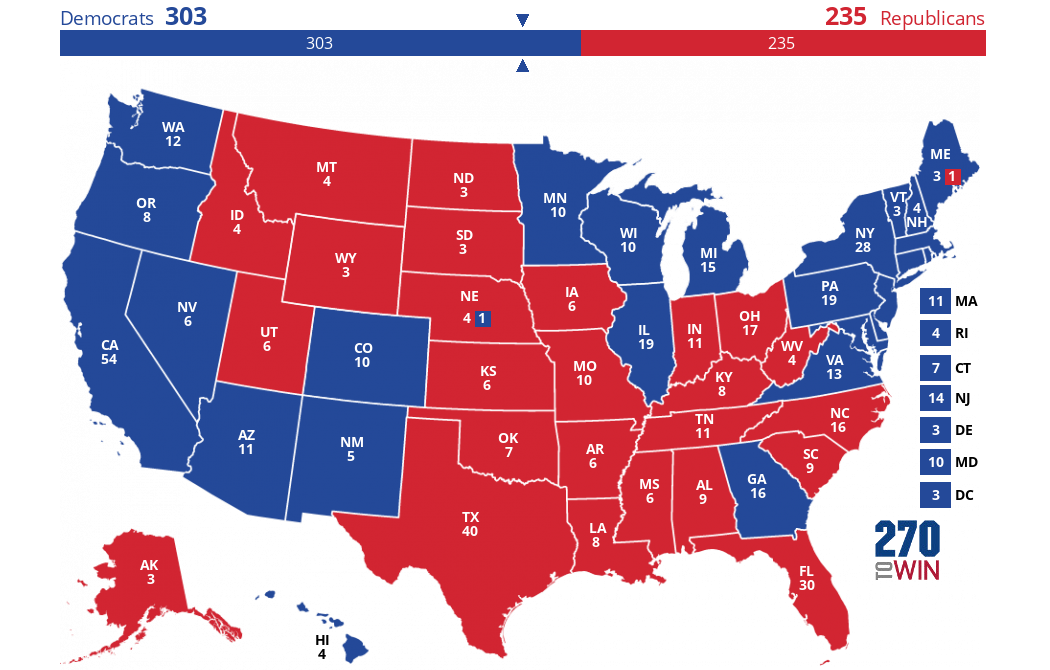Interpreting and Utilizing Presidential Polls: Latest Presidential Polls

Presidential polls, snapshots of public opinion, provide valuable insights into the political landscape. They can help us understand voter preferences, track campaign momentum, and even predict election outcomes. However, it’s crucial to approach these polls with a critical eye, recognizing their inherent limitations and potential for bias.
Understanding Poll Limitations and Potential for Bias
Presidential polls are not perfect predictors of election results. They are susceptible to various factors that can influence their accuracy and reliability. It’s essential to understand these limitations to interpret poll results effectively.
- Sampling Bias: Polls rely on samples of the population to represent the broader electorate. If the sample is not representative, the poll results may not accurately reflect the views of the entire population. For instance, a poll that oversamples certain demographic groups might produce skewed results.
- Measurement Error: The way questions are phrased and the order in which they are asked can influence respondents’ answers. This is known as measurement error, which can introduce bias into poll results. For example, a poll that leads respondents towards a particular answer may produce biased results.
- Non-response Bias: Not everyone who is selected for a poll will participate. This can lead to non-response bias, where the opinions of those who choose not to participate may differ significantly from those who do. For instance, a poll that excludes people who are less likely to participate, such as those with low levels of education or income, may not accurately reflect the views of the entire population.
Interpreting Poll Results Effectively
To interpret poll results accurately, consider factors like sample size, margin of error, and poll methodology.
- Sample Size: A larger sample size generally leads to more accurate results. However, even with a large sample size, the poll may not be representative of the entire population if it suffers from other biases.
- Margin of Error: The margin of error indicates the range within which the true population value is likely to fall. A smaller margin of error suggests greater accuracy. For example, a poll with a margin of error of ±3% means that the true population value is likely to be within 3 percentage points of the reported result.
- Poll Methodology: The way a poll is conducted, including the method of data collection, the type of questions asked, and the time period covered, can influence the results. For instance, a poll conducted using a random sample of registered voters is likely to be more reliable than a poll conducted using a non-random sample, such as a phone survey of people who call in to a radio station.
Utilizing Presidential Polls in Political Campaigns and Media
Presidential polls play a significant role in political campaigns and media coverage.
- Campaign Strategy: Campaigns use polls to gauge public opinion, identify key issues, and tailor their messages to target specific voter groups. For example, a campaign might use poll data to determine which issues are most important to voters and focus its messaging on those issues.
- Media Coverage: Media outlets use polls to track the race, highlight key trends, and provide insights into the electorate’s mood. For instance, a news organization might report on a poll showing a close race between two candidates, indicating a tight contest.
Critically Analyzing and Evaluating Presidential Polls, Latest presidential polls
To critically analyze and evaluate presidential polls, consider the following:
- Source Reliability: Examine the source of the poll and its reputation for accuracy and impartiality. For instance, polls conducted by reputable organizations like Gallup or Pew Research Center are generally considered more reliable than those conducted by less-known organizations or partisan groups.
- Poll Methodology: Assess the poll’s methodology, including the sample size, margin of error, and data collection methods. For example, a poll conducted using a random sample of registered voters is likely to be more reliable than a poll conducted using a non-random sample, such as a phone survey of people who call in to a radio station.
- Poll Timing: Consider the timing of the poll and any major events that may have influenced public opinion. For example, a poll conducted shortly after a major news event may not reflect long-term trends in public opinion.
The latest presidential polls are hotter than a Kardashian’s new boyfriend, and everyone’s got an opinion. But while the political world is spinning, we’re all wondering about the status of Ethiopian distance runner Lamecha Girma, who’s been sidelined by an injury.
Check out this lamecha girma injury update to see if he’ll be back in the race soon. Back to the polls, it’s a nail-biter, folks, and everyone’s got their fingers crossed.
Who’s gonna win the next election? It’s all anyone’s talking about, but honestly, I’m more concerned about Lamecha Girma’s injury. Check out this lamecha girma injury update to see what’s going on. But hey, maybe if he recovers in time, he can give the president a run for their money.
Gotta love a good underdog story, right?